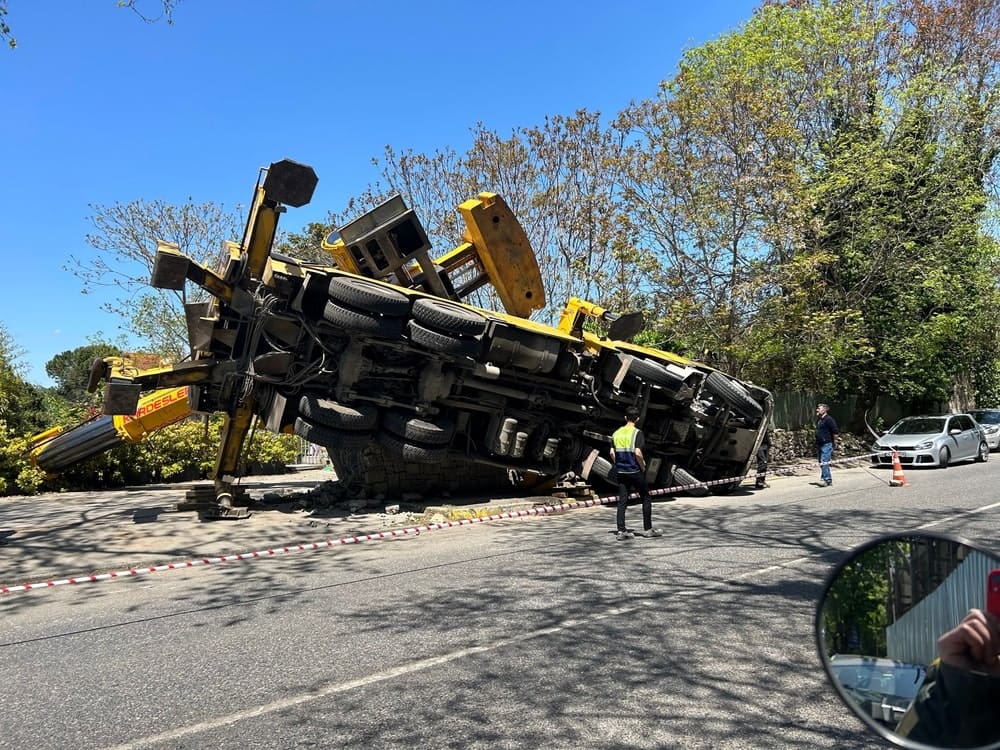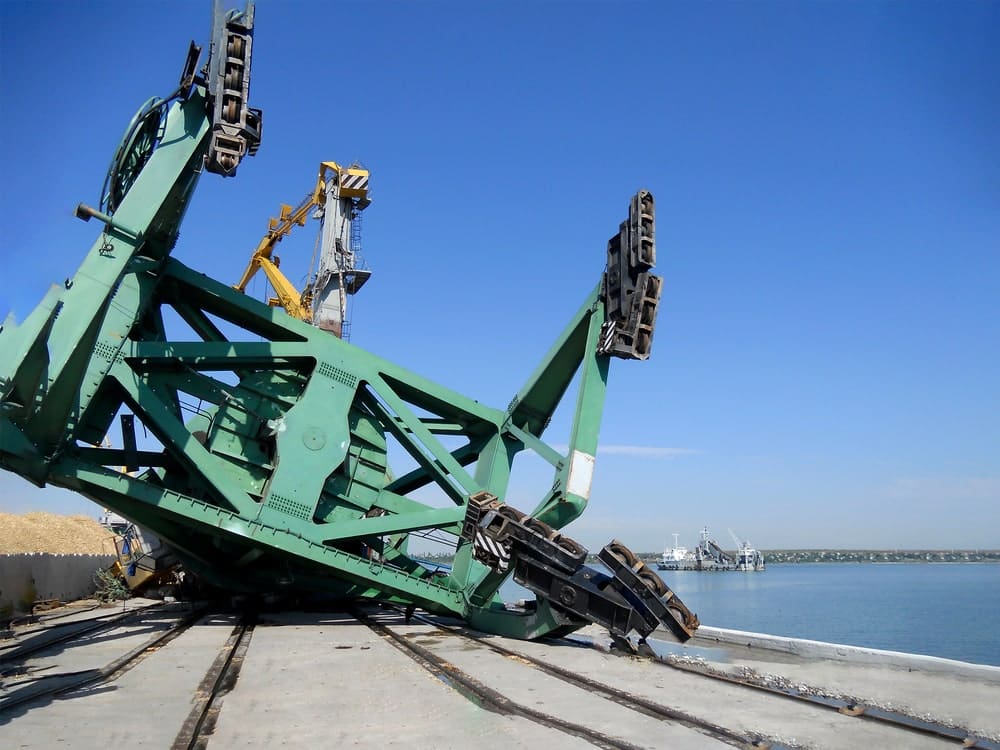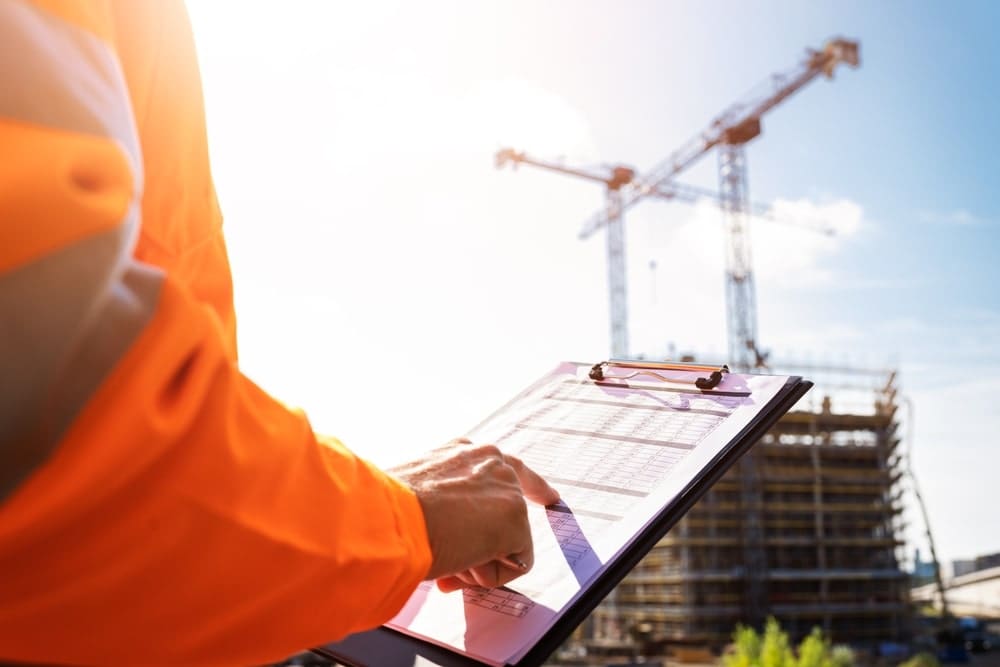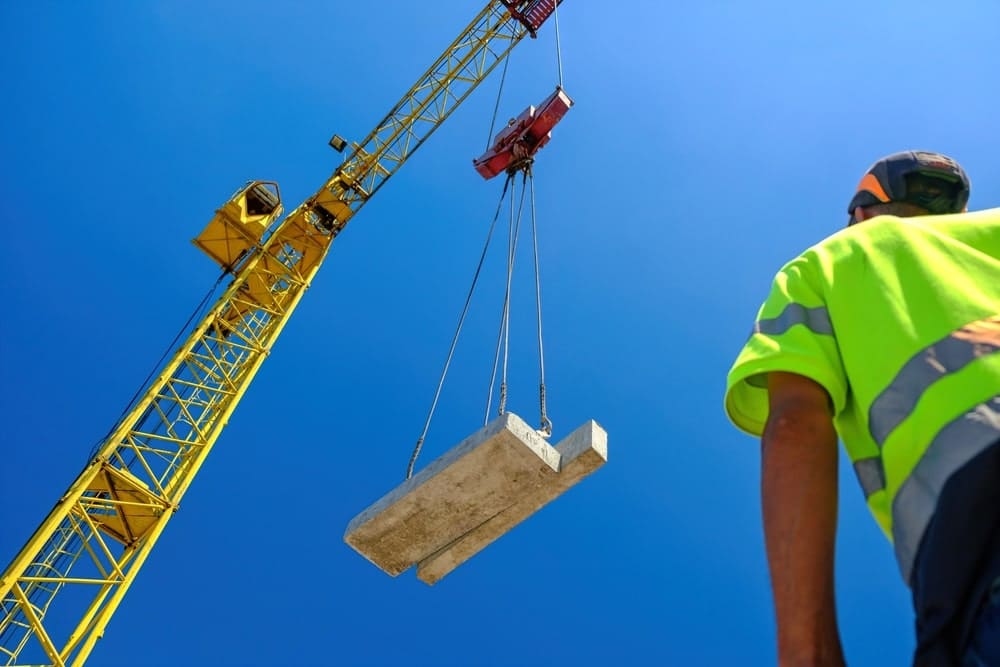As a construction worker, you play a crucial role in our infrastructure by ensuring our buildings are built safely and our roads are safe. Working on a construction site comes with risks, and proper safety procedures ensure you get home safely after a long day. Out of the many on-site responsibilities, adequate safety measures can help prevent crane accidents and keep you and others safe.
If you want to learn more about crane safety, Heavy Equipment Colleges of America is here to help. We have decades of experience teaching the ins and outs of heavy equipment training, and we’ll quickly go over common causes of crane accidents as well as basic crane accident prevention methods to keep yourself safe.
Table of Contents
Causes of Crane Accidents
Cranes help move heavy materials from one place to another and expedite the construction process. A variety of factors can cause a crane accident, and many of them can have dire consequences. Knowing and understanding the risks can help you prepare in advance and even prevent an accident from happening. The 5 most common causes of a serious crane accident include:
1. Crane Collapse
Whether it’s a tower crane or a mobile crane, they are still massive pieces of steel equipment that tower over a construction site. When a piece fails or the load is too heavy, it can lead to a catastrophic crane collapse. Falling cranes can cause serious damage to nearby structures and property, and it poses a severe risk to anyone within the vicinity.

A crane collapse typically doesn’t happen out of nowhere. It’s usually caused by a structural failure, an improper crane setup, or intentionally exceeding a crane’s safe load weight capacity.
2. Rigging Failures
Cranes use a series of pulleys, ropes, and chains to secure loads and safely transport them around a construction site. This rigging helps keep the materials secure and allows the crane to easily lift and carry them without excess strain.
When rigging systems fail (such as a rope snapping), the crane can drop the load. If this happens, the broken ropes and chains can whip around and hit nearby equipment or pedestrians, leading to potentially severe injuries.
Rigging failures are often caused by damaged or worn ropes, improper rigging, and incorrect load assembly.
3. Improper Employee Training
Operating heavy machinery such as a crane is a big undertaking that involves careful procedure and intricate steps. Not anyone should hop into a crane and start driving it around. Since these are massive pieces of equipment, everyone on the job site needs proper training to learn proper safety procedures.
Without the proper crane training, operators can make simple mistakes that can quickly devolve into serious crane accidents. It’s important workers are equipped with the right knowledge and know how to rig a load for transport to avoid rigging failure or crane collapse.
Maximize Productivity with Properly Trained Operators
Choose HEC for Heavy Equipment Certification
Accelerated Programs | Multiple Locations | Job Placement Help
Open The Door To A New Career!
Start Enrollment ProcessFind The Right Location For You4. Electrocution
Construction sites are often located near open power lines or overhanging lines, and crane drivers need to remain aware as they drive the machinery. Because of their massive size, a crane can come in contact with a live power line overhead, possibly leading to electrocution. Electrocution can result in serious injuries and long-term consequences that last months or years after the accident.
Crane operators need to remain aware of their surroundings and plan their movements accordingly. Plan the driving route ahead of time to avoid power lines and steer clear of them as you drive.
5. Improper Assembly

Before you start moving loads around a job site with a crane, you need to assemble the equipment. Each piece needs to fit together properly and securely to ensure the crane’s functionality. If you rush through the assembly process or skip a step, the machine’s structural integrity can be in jeopardy.
Cutting corners to save time puts yourself and everyone else on the job site at risk, and it can lead to a serious or even fatal crane accident. This can lead to structural failures, crane collapses, or even tipping incidents.
How to Prevent Crane Accidents?
When it comes to crane accidents, prevention is the best thing you can do. It’s infinitely better to proactively prevent an accident than have to react to an accident when it happens.
Basic safety procedures and taking that extra step just to be safe can save you the pain of dealing with long-term injuries from a crane accident. Here are 5 tips you can practice today to keep yourself and others on the job site safe while using a crane:
1. Crane Inspection
Before you step foot into a crane or start rigging a load, you should perform a thorough inspection of the equipment. Give it a visual inspection and check that all the main components are assembled properly and working smoothly. If you notice minor safety concerns, don’t hesitate to point them out and get them addressed.

In addition to daily visual inspections, your crane should go through an annual extensive inspection that does a deep dive into the equipment. These inspections check each small detail to make sure everything is working properly and the crane is safe to operate. They can also do tune-ups and minor repairs if needed.
2. Select the Right Crane for the Job
Not all cranes are the same. From fixed cab cranes to mobile cranes, each one plays a specific role and has its intended uses. If you’re working on a smaller job site, you may not need a massive tower crane to get the job done properly.
Take a look at the job site, the layout, and what task you need the crane to accomplish. Be sure to pick the right crane for the job to keep others safe and help prevent a serious accident.
3. Always Utilize Qualified Personnel
We’ve all looked at a crane and thought, “I bet I could drive that.” While it seems easy enough at first, safely operating a crane is a delicate process that requires attention to detail and finesse. When choosing someone to operate the crane, look for individuals who have experience with the equipment and the proper training.
Certain cranes require specific certifications from an accredited institution, so take advantage of those and look for individuals who are qualified and skilled to work the machinery.
Become Qualified Heavy Equipment Personnel
Get Certified with HEC Today!
Accelerated Programs | Multiple Locations | Job Placement Help
Open The Door To A New Career!
Start Enrollment ProcessFind The Right Location For You4. Field Level Hazard Assessment
Construction sites are filled with potential hazards for a crane. Before getting to work, you can do a quick assessment of the job site and identify these potential hazards. Once you know the hazards, you can determine the risk they pose to the crane and operator, and take the appropriate steps to eliminate or contain the hazards before you start working. This can include uneven terrain, tight spaces, or obstacles in the way.
5. Rig the Load Correctly

As mentioned earlier, improper rigging can increase the risk of a serious accident on the job site. While it can be tempting to rush through the rigging so you can get to work and finish the job quickly, you don’t want to put your safety at risk.
Take the extra couple of minutes to properly load the rig and make sure it’s secure before moving the crane. This extra step keeps you and others on the site safe, and it can greatly reduce the risk of injuries. It’s better safe than sorry.
Get Certified in Crane Training with Heavy Equipment Colleges Programs
Certifications from an accredited institution can set you up for success as a heavy equipment operator. At Heavy Equipment Colleges of America (HEC), we combine practical experience with formal education to create skilled professionals ready to join the workforce.
Our extensive training programs make sure you’re ready to operate a crane safely and reduce the risk of a crane accident on the job. We also offer OSHA courses that teach you the basics of compliance and certifications.
Interested in completing a heavy equipment training course with us? Get in touch with one of our admissions representatives to go over our program options. We’re more than happy to answer any questions you may have and get you on your way to a successful career in construction!
Ready to Operate Heavy Equipment?
Get Certified with HEC Today!
Accelerated Programs | Multiple Locations | Job Placement Help
Open The Door To A New Career!
Start Enrollment ProcessFind The Right Location For You
